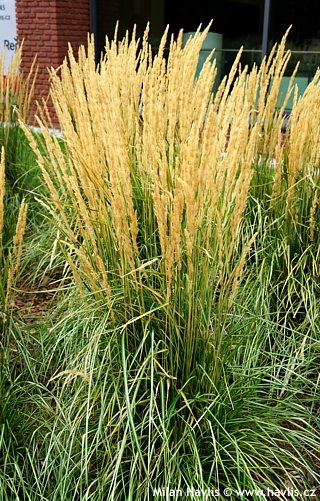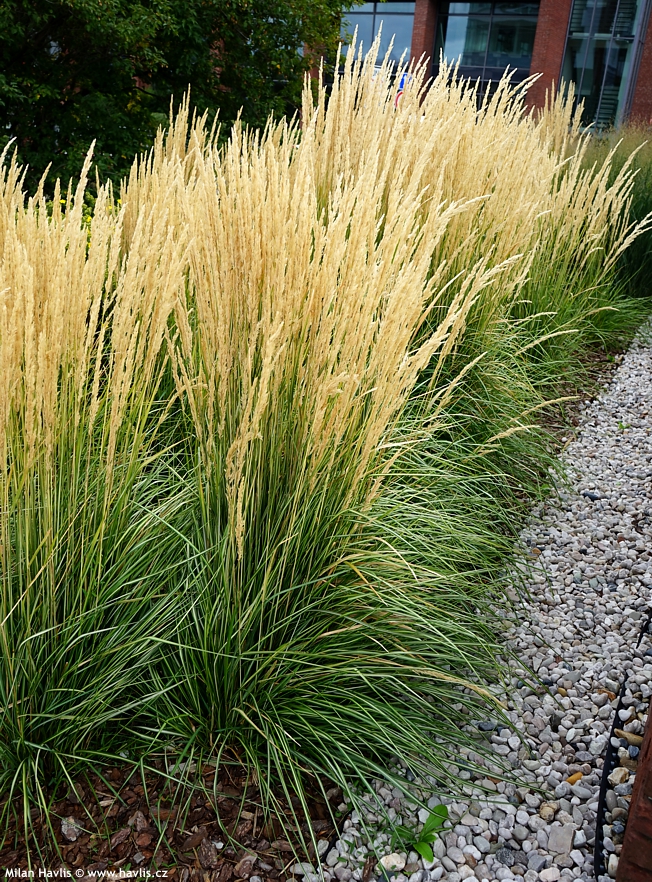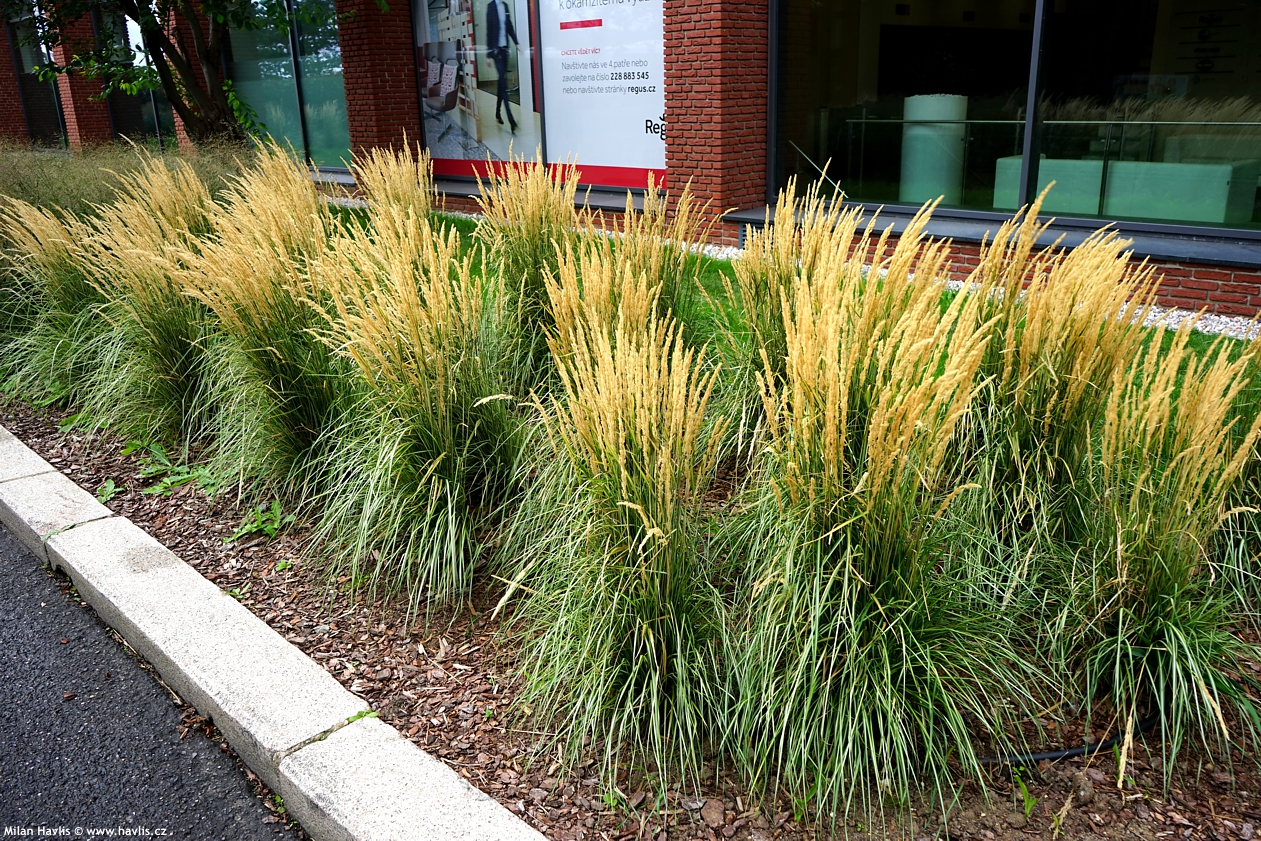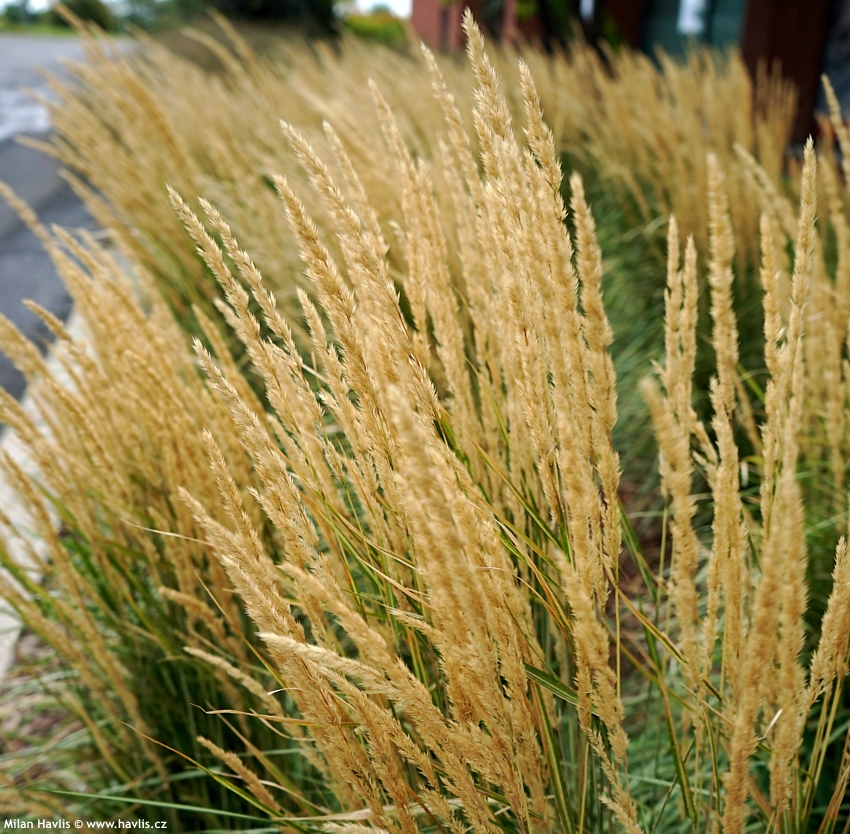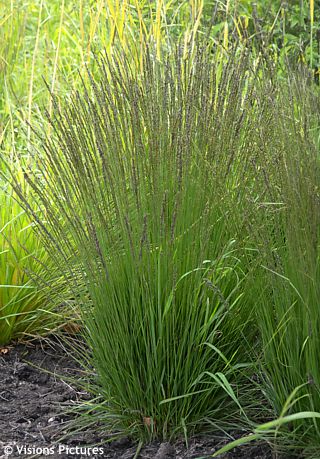Calamagrostis x acutiflora 'KARL FOERSTER' feather reed grass
Calamagrostis
Reed grass is a very handsome and easy-to-grow grass that can be found in many places of temperate climate of Europe, Asia and America. Its Latin name comes from Greek where kalamos means reed and agrostis grass. It is closely related to sugar cane which also belongs to the same family but is a different species (saccharum officinarum).
Feather reed grass is a European hybrid, a cross between c. arundinacea and c. epigejos, and Karl Foerster is possibly its most popular variety. Already from June it makes about 1.5 m tall, thin stems topped with slender but thick spikes of pinkish flowers which soon turn to bright beige and glow like a beacon from midsummer until autumn. The flowering stems make a beautiful cut flower but look best left alone as the dry inflorescences decorate the garden from June until spring. Leaves are deciduous, narrow, medium green and partly glossy. The plant is strictly upright and compact.
It was discovered in Hamburg Botanic Garden by German horticulturist Karl Foerster (1874-1970) in 1930 and introduced to commerce in 1950. Apart from its beauty, it is renowned for its non-invasive performance as it does not make runners. Only seldom and under optimal soil conditions some seeds may prove vital enough to produce a few unwanted plants around in small quantity, yet they cannot damage plant’s good reputation.
Reed grass comes from wet and sunny locations and will thrive under these conditions in humus rich soil of any pH in your garden, too. In early spring cut it back to some 5-10 cm above soil level and make sure not to damage newly emerging stems. Hardy to about -29 °C (USDA zone 4).
Last update 30-08-2024

































